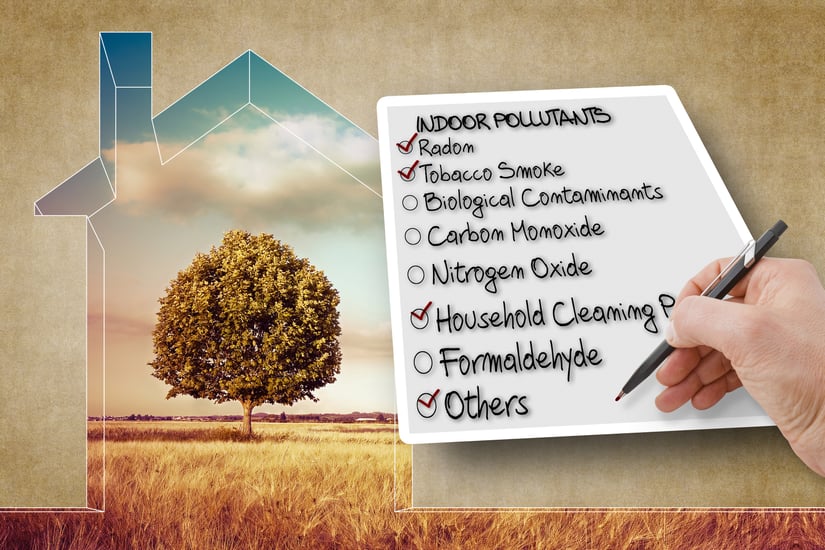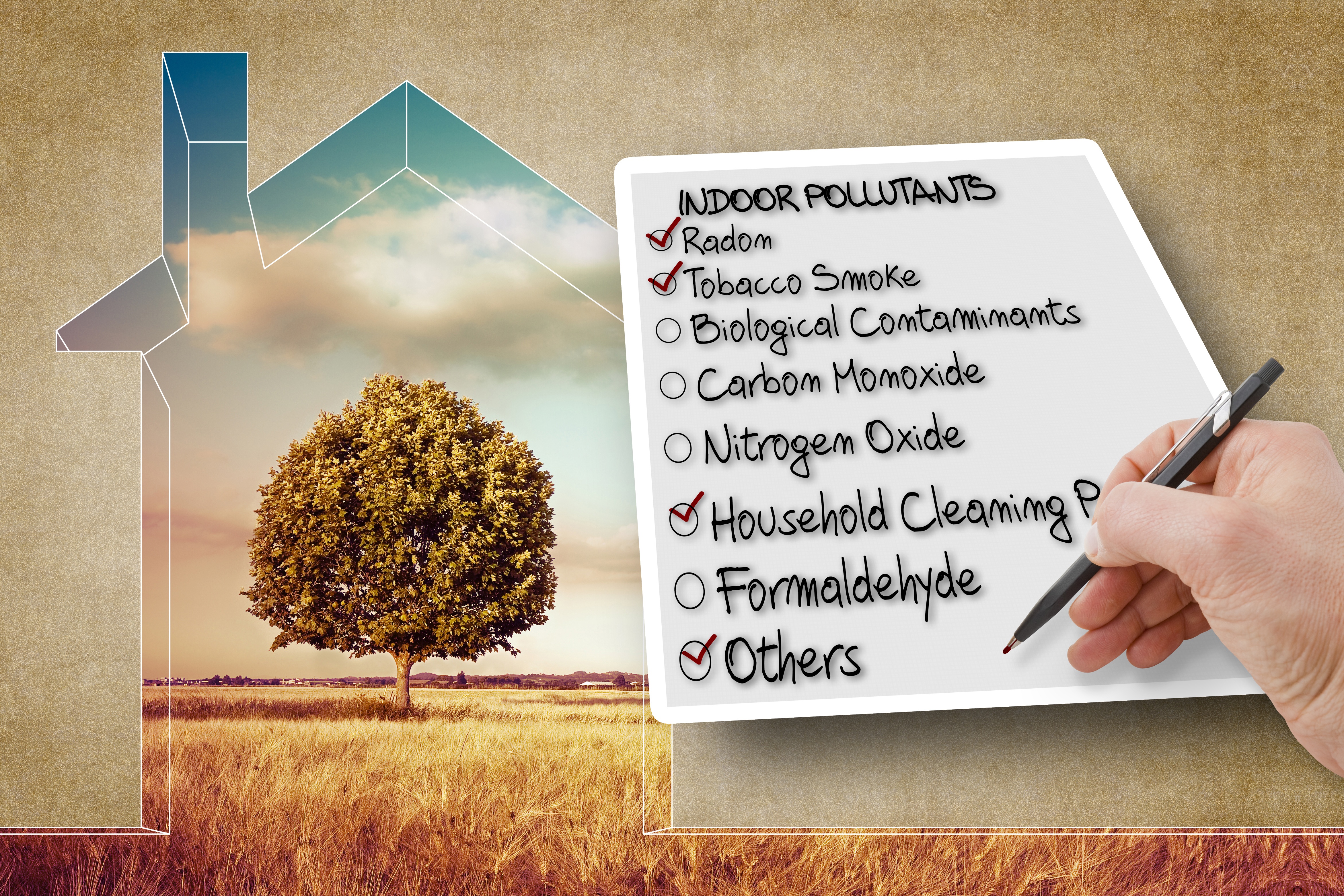
You might have thought that the pollution we’re exposed to whilst outdoors might pose a greater risk to our health than any we could come up against indoors; however you’d be wrong. The surprising revelation that indoor air pollution could, potentially, be a staggering 10 times more harmful to our wellbeing than that inhaled when out and about comes as something of a shocker. Especially when you bear in mind the noxious air quality which engulfs us pretty much every time we venture off the doorstep. From the effect of chemical processing plants (or rather, the burning of fossil fuels which routinely spew pollutants into the atmosphere) and vehicle emissions, through to the distribution of agricultural dust (ammonia being just one source, together with the widespread usage of insecticides and pesticides) and mining operations, to cite just a few of the primary examples most culpable for compromised outdoor air quality.
Breaking them down to their simplest elements as such (and if we choose to get a little more scientific), and we’re talking about the ozone (a largely unseen threat, and effectively a free radical of oxygen), particulate matter, nitrogen dioxide (by-product of burning fossil fuels), sulphur dioxide (key component of acid rain), carbon monoxide (result of incomplete combustion), polycyclic aromatic hydrocarbons (in other words, the chemical constituents of soot) and a mixed bag of toxic air pollutants across the board.
An expert on the subject of indoor air pollution – who was recently addressing a summit in India dedicated to air quality management – went as far as to suggest that toxins have the capacity to “remain trapped inside an enclosed room” should the ventilation be failing in its duties, or indeed, non-existent in the first place. According to both scientists and leading professionals there are a number of pollutants present indoors which could affect individual’s health in an adverse way. The list includes the likes of formaldehyde, radon, asbestos, heavy metals, tobacco smoke and other released by burning of cooking fuel and biomass.
Indoor Air Pollution Viewed as Being Just as Dangerous as Outdoor Exposure
Closer to home, and a study carried out of late has concluded that many homes in the London area are exhibiting what experts in indoor air pollution describe as alarming levels. These days people tend to dwell on the more obvious signs of pollution which are emitted outdoors, yet there are now reasons to believe that more familiar immediate surrounds could represent an equal, if not greater threat. The research conducted witnessed the comings and goings of a number of individuals who were given air quality monitors to keep tabs on CO2 levels observed as they went about their daily business.
One, who remained at home for a passage of time during the course of the study, recording an ‘at home’ reading which surpassed that measurement which is considered normal within such an environment. And moreover, returned to normal levels when the individual in question visited both her local town centre and railway station. As noted earlier, lack of ventilation is acknowledged as being a significant factor as and when CO2 levels increase, and one of the learned individuals who oversaw the results of the research confirmed that levels tend to vary as people come and go during the day; and windows are subsequently open and closed.
The Unseen Danger Which Lurks Within our Homes and Places of Employment
Carbon monoxide is, as most people already understand is an odourless and colourless gas, and can lurk in improperly vented gas appliances, poorly maintained boilers (and furnaces in the workplace surround) and clogged and/or leaking chimneys. And of course, high levels of carbon monoxide can pose a serious threat to health. Aside from carbon monoxide, radon is another usual suspect when it comes to indoor air pollution causes. Again, another very real threat which carries neither smell nor colour to distinguish it, radon is a radioactive gas that results from the natural breakdown of uranium in soil, rock and water. In terms of how radon might infiltrate your home, and that’s down to typically entering a property via the soil and seeping into any cracks and crevices of the building’s foundations; water supply sources being another route one. Serious respiratory issues can ensue, including possible lung cancer.
Another air pollutant which can be harboured behind closed doors is those which are generically labelled, volatile organic compounds. Perpetuators of such pollution comprise of various types of household paints, disinfectants and solvents, together with some building materials (certain carpets and flooring). Once more, health implications are pretty much omnipresent and are flagged up as eye, nose and throat irritation, headaches, nausea, damage to the liver, kidney and central nervous system and, in some cases, even cancer.
Indeed, headline impacts on health the public need to be aware of (when exposed to higher than average indoor air pollution) include milder – yet still potentially debilitating – conditions such as asthma and sick building syndrome, through to respiratory irritation, heart disease and even cancer in sustained and/or extreme cases, and depending on the source identified. Referring to the all-important figures (and what symptoms could prevail when reached in a home scenario), and CO2 levels between 1000 – 2000ppm are said to trigger drowsiness; yet when advancing still further can instigate headaches, sleepiness, poor concentration, nausea and increased heart rate.
So, What Can We Do To Minimise the Risk of Indoor Air Pollution, According to Experts?
Ventilation. Ventilation. Ventilation. Yes, ensuring that your home is well-ventilated at all times is, arguably the most important way in which to avoid indoor air pollution. To prevent dangerous concentrations of carbon monoxide for instance, it’s vital to both maintain combustion equipment and ensure proper ventilation. However a flagrant disregard for ventilation isn’t the only means as we’re about to discover below. Elsewhere there’s a roll call of seemingly eclectic means to eliminate the threat, including smoking outside (and crucially, a safe distance from open doors and windows), removing your outdoor shoes when you go indoors, utilising an extractor fan (especially when cooking, and to help prevent the build-up of condensation), having hard surface flooring (as opposed to carpets, which have a capacity to absorb pollutants), using air purifiers and keeping house plants (English ivy and bamboo palm work wonders, apparently) which work to naturally improve localised air quality in our abodes. It’s also crucial to keep a carbon monoxide detector in good working order in your home, to afford you an early warning of any indoor air pollution.





